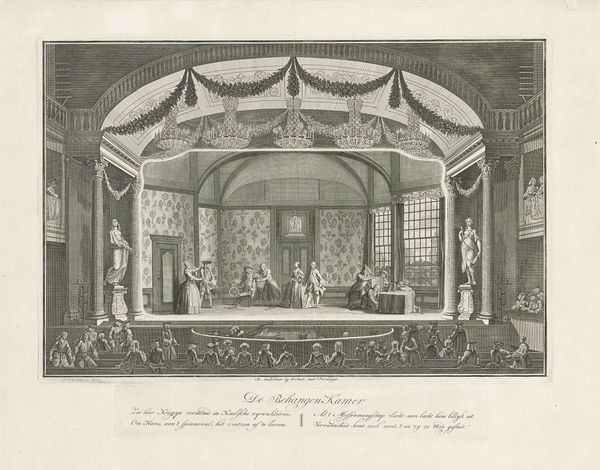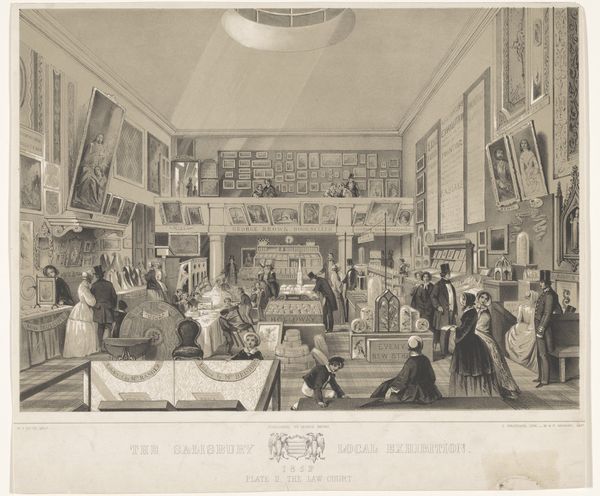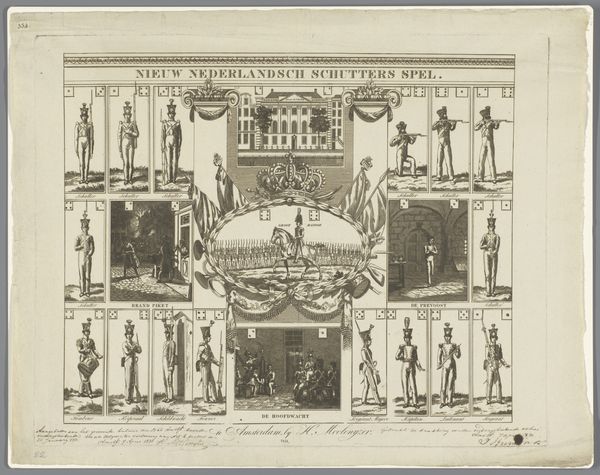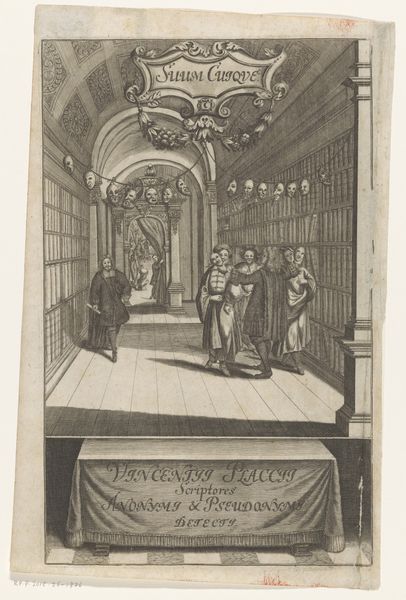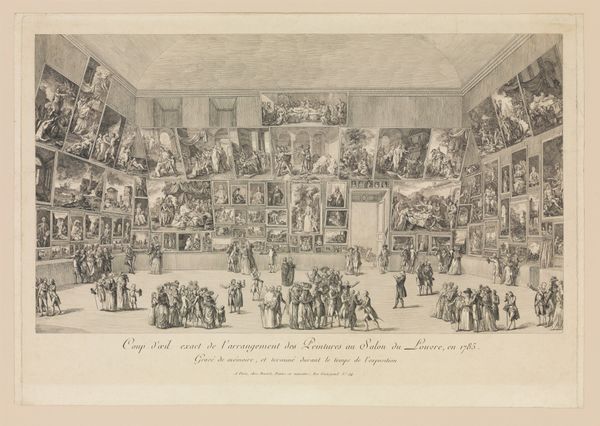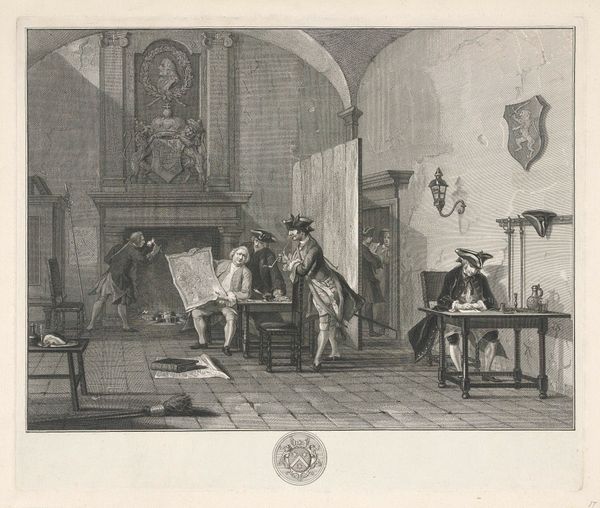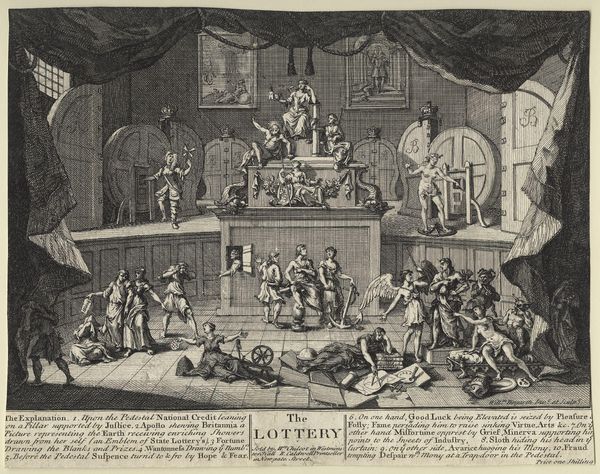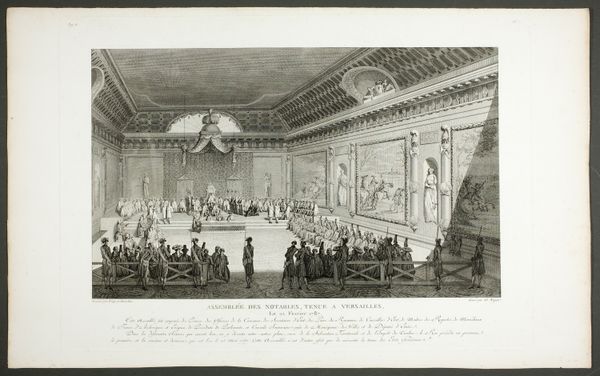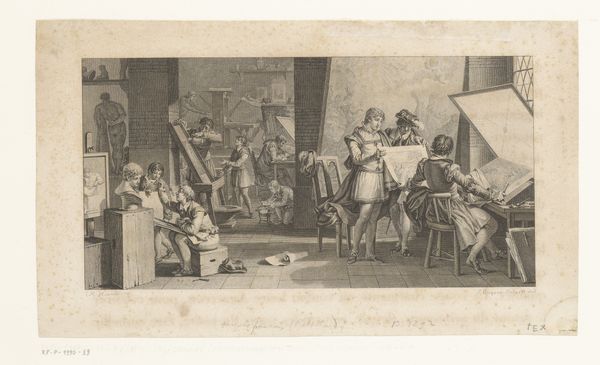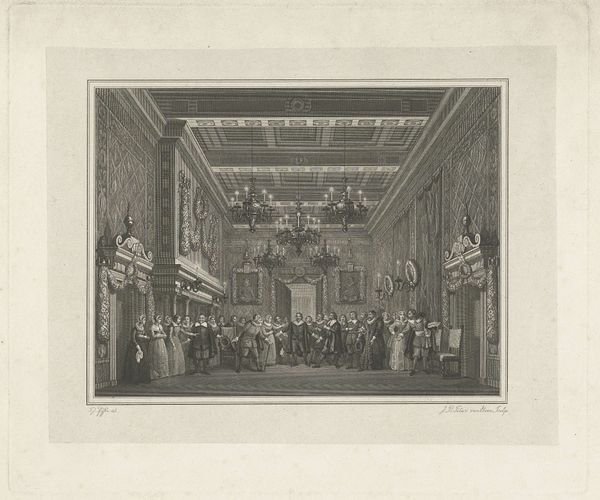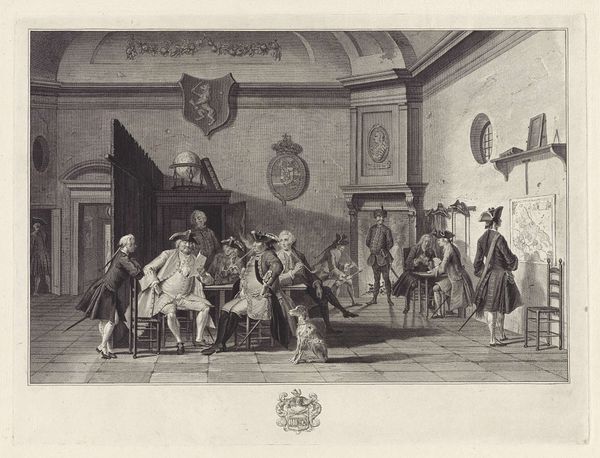
The interior of the Oplotheca in Brook St. Bond St. being the finest Collection of Antient Armour in Europe, now open for public inspection 1816
0:00
0:00
print, paper, engraving
#
portrait
# print
#
paper
#
romanticism
#
history-painting
#
armor
#
engraving
Dimensions: 11 3/8 x 13 1/2 in. (28.8 x 34.2 cm)
Copyright: Public Domain
This print, made in 1810 by William Marshall Craig, depicts the interior of the Oplotheca, a London museum displaying antique armor. The print itself would have been made using etching and aquatint, processes involving coating a metal plate with wax, incising an image, and then using acid to bite away the exposed metal. This would have been a highly skilled, laborious job. Look at the array of metallic surfaces that the artist has described with such nuance. The armor itself testifies to even earlier labor. Each piece represents countless hours of forging, hammering, and polishing by skilled artisans. In its time, armor was a high-tech product, involving sophisticated metallurgy and complex forms. But by the time this print was made, armor's primary purpose had shifted. It was now more a symbol of power and history, a commodity to be collected and displayed, than a functional defense. Considering the material and the making of both the armor and the print allows us to reflect on shifting values, labor, and the evolving relationship between objects, art, and commerce.
Comments
No comments
Be the first to comment and join the conversation on the ultimate creative platform.
